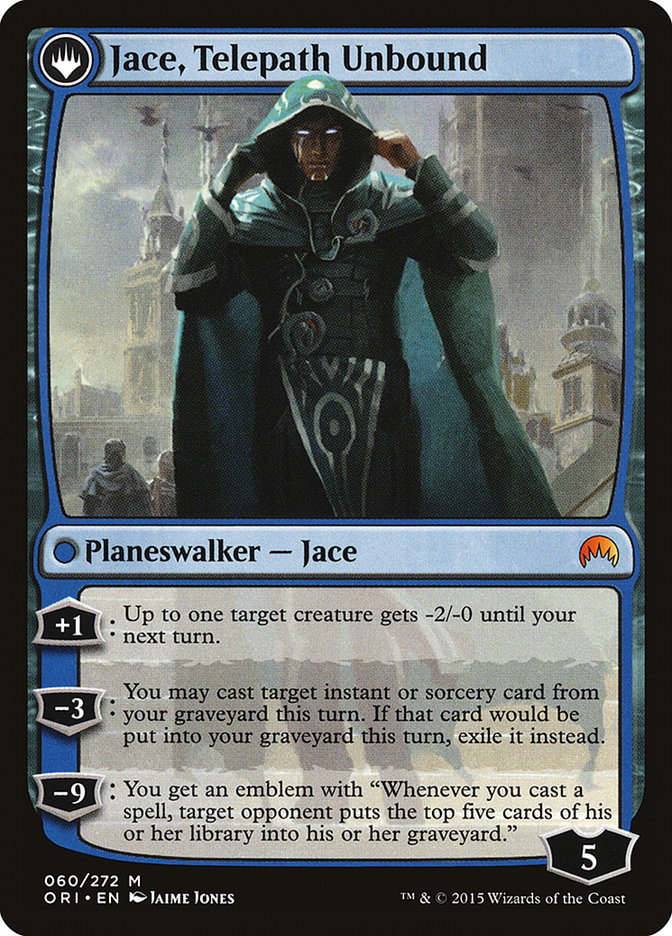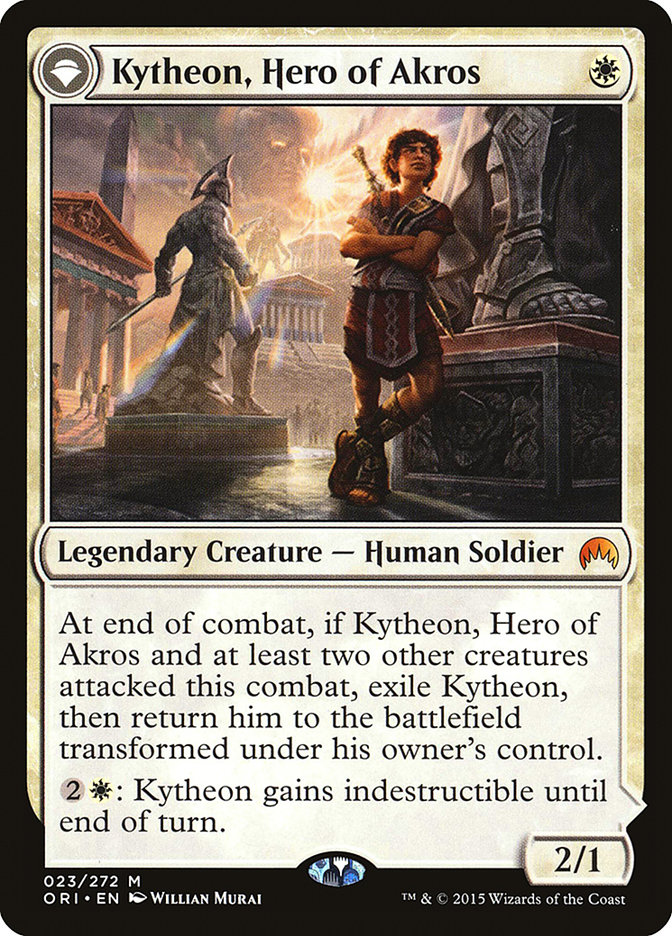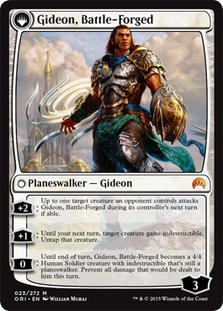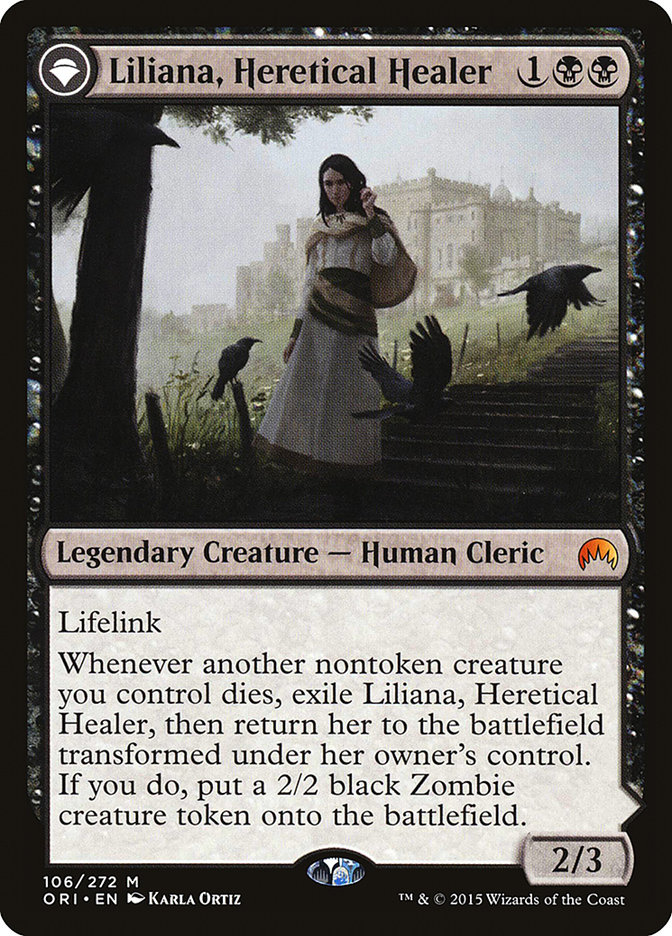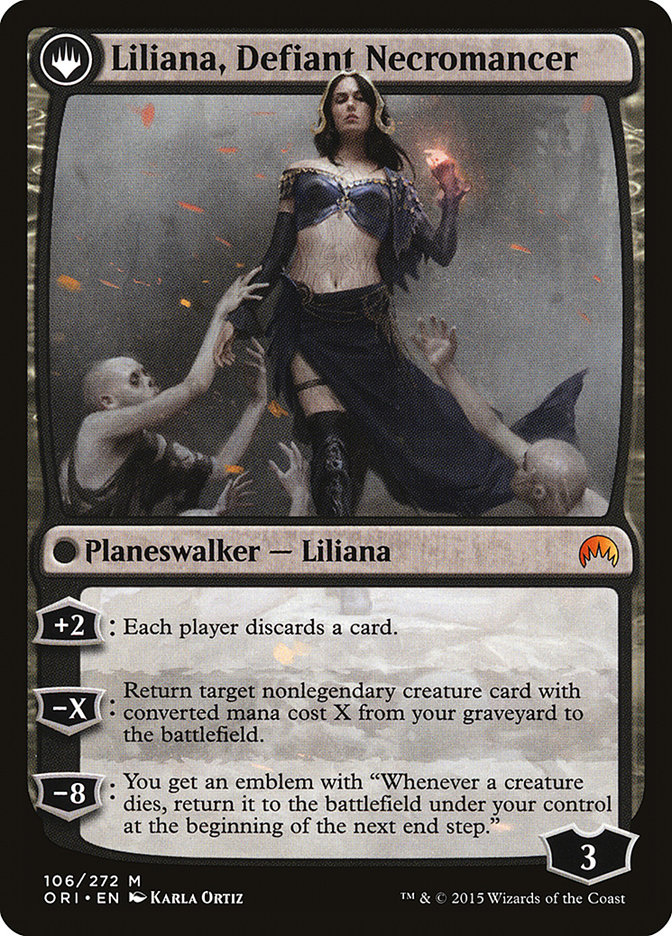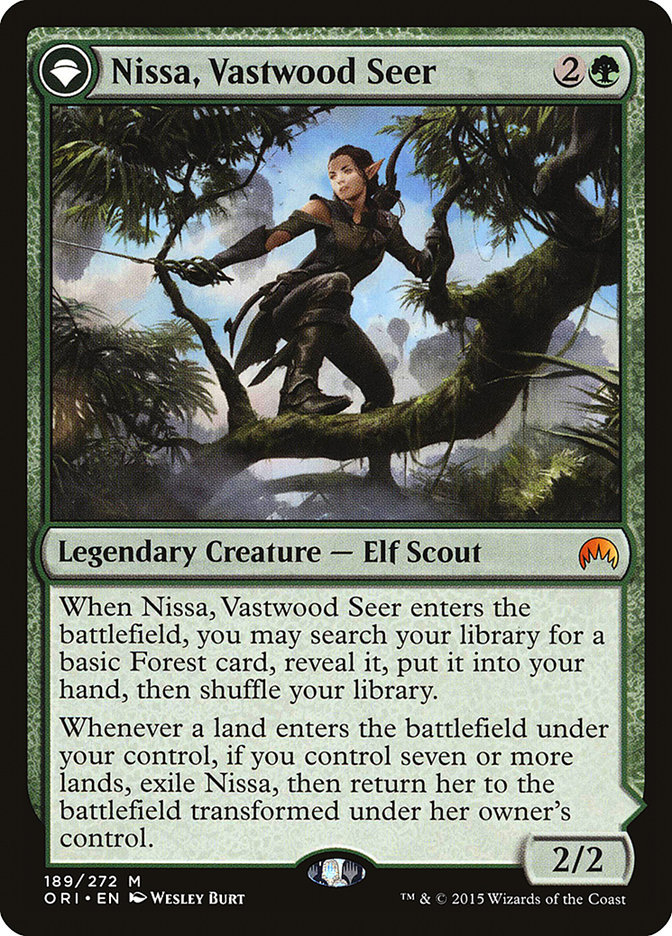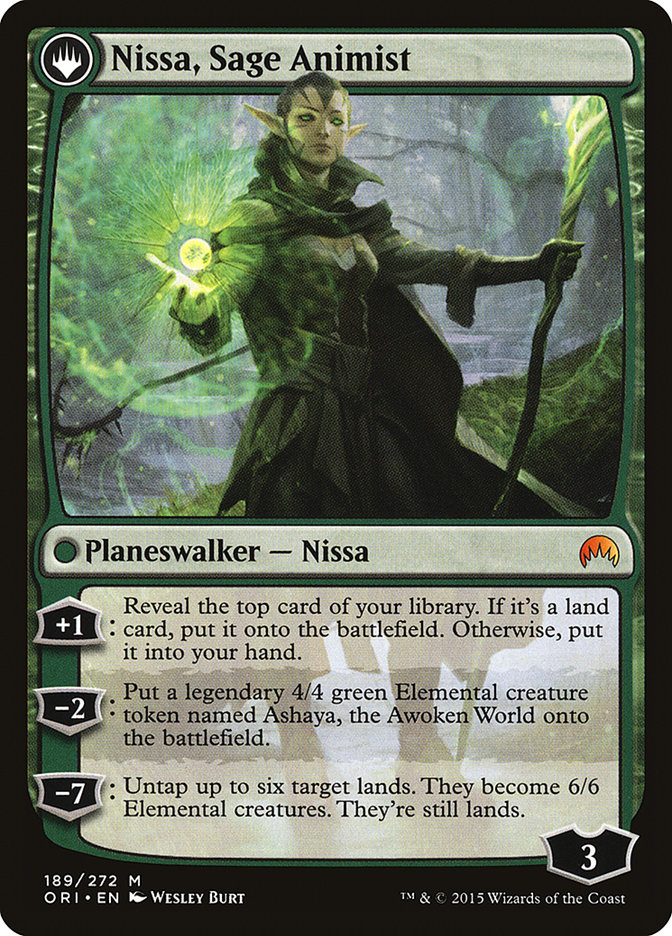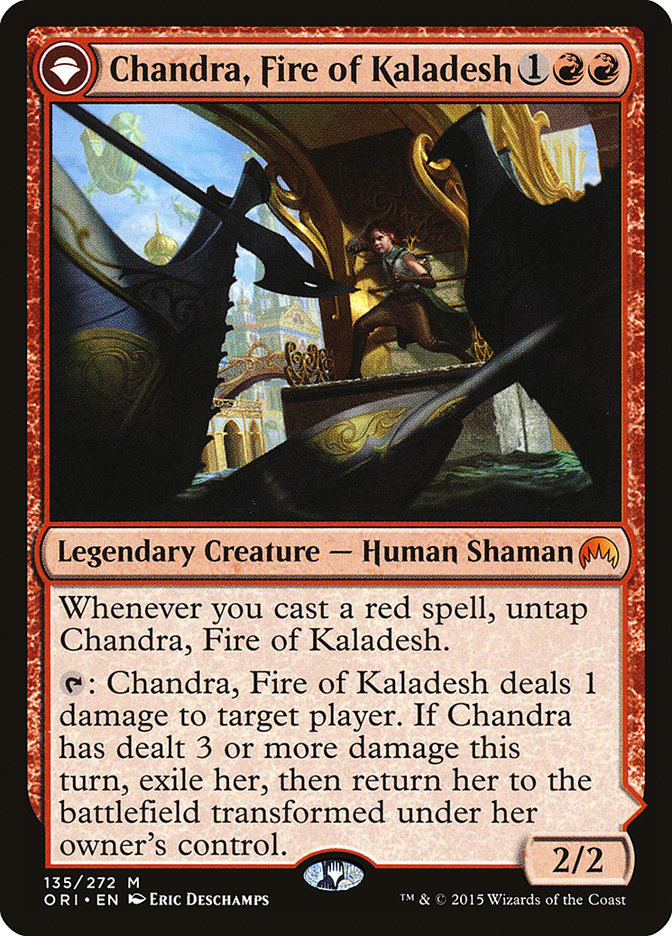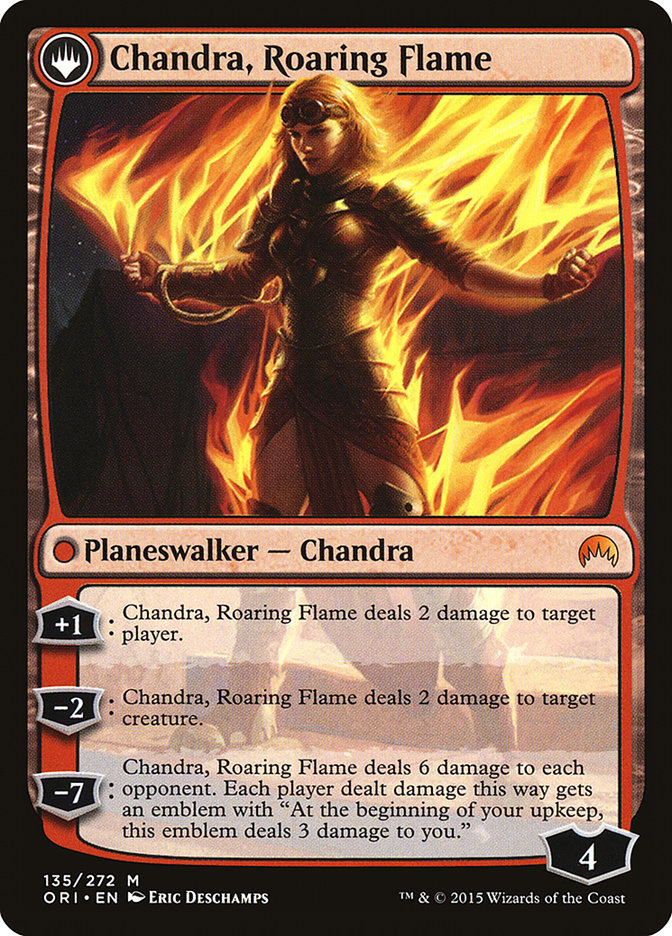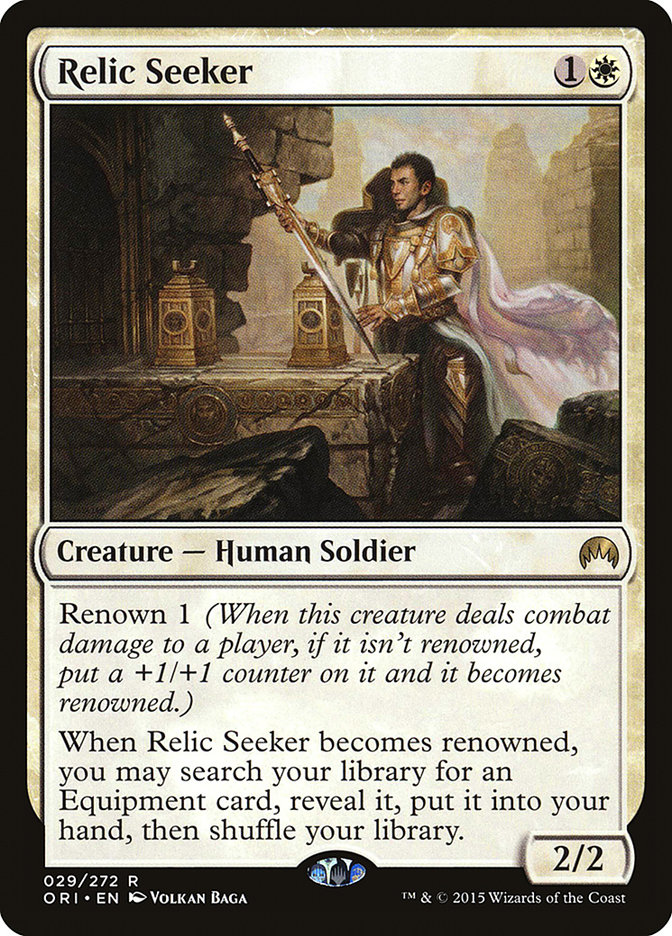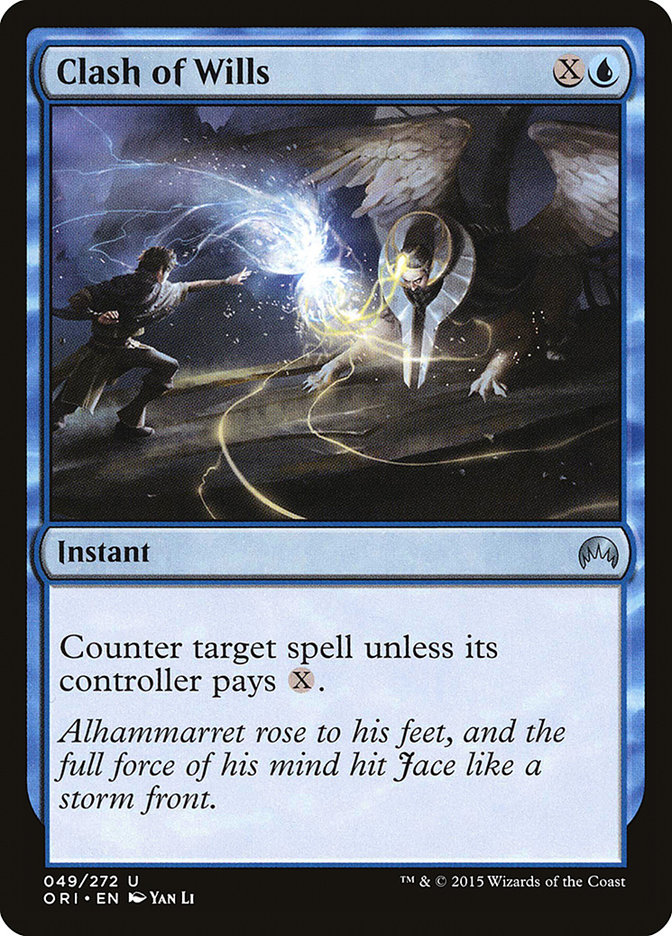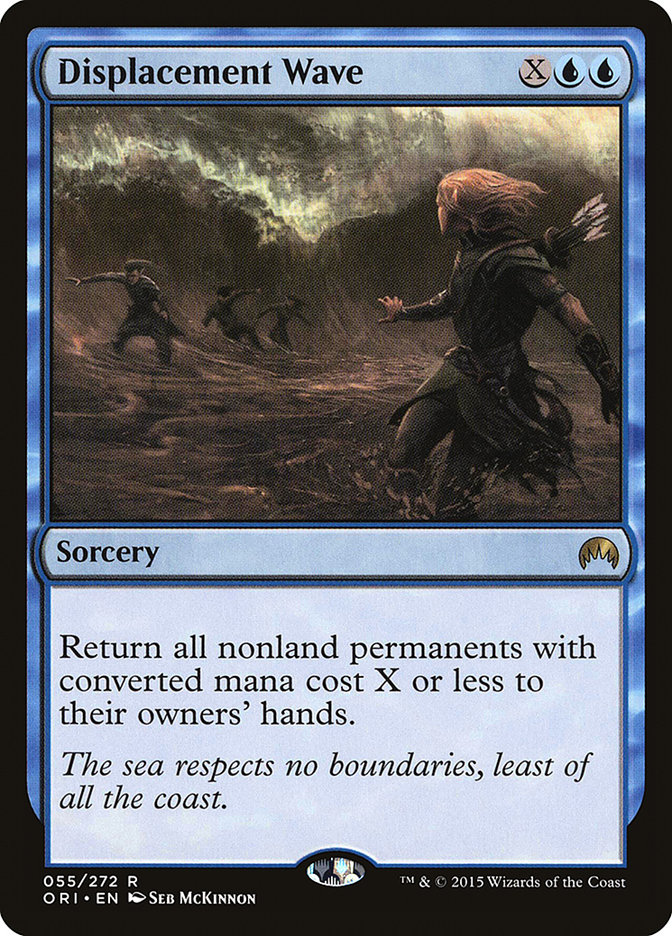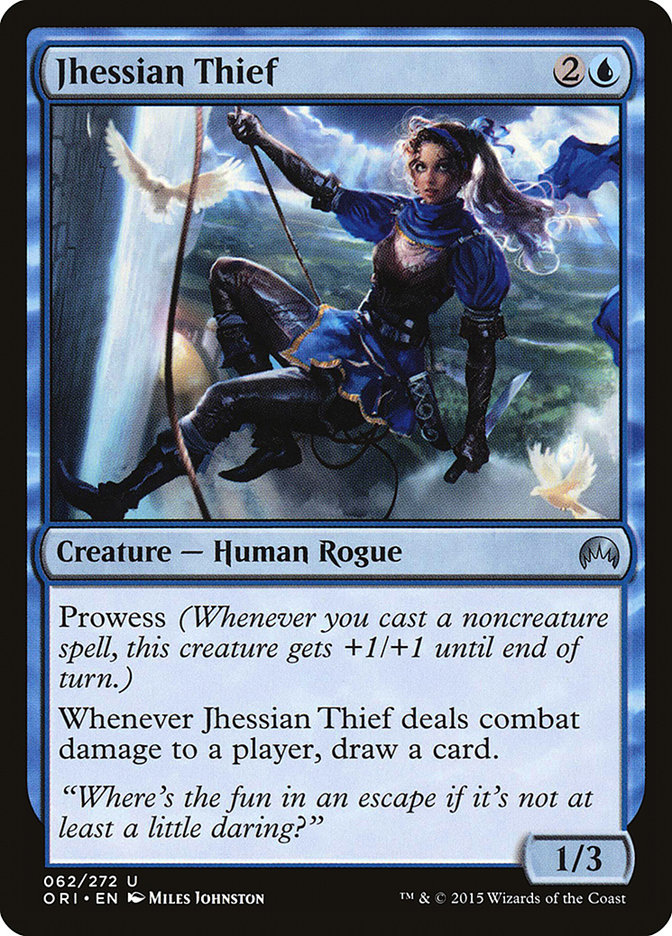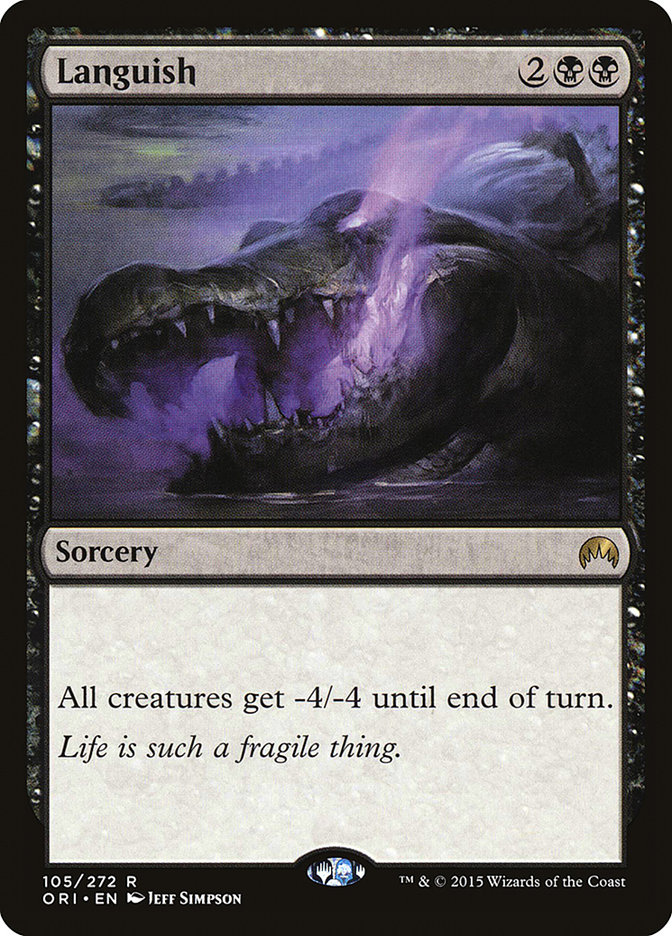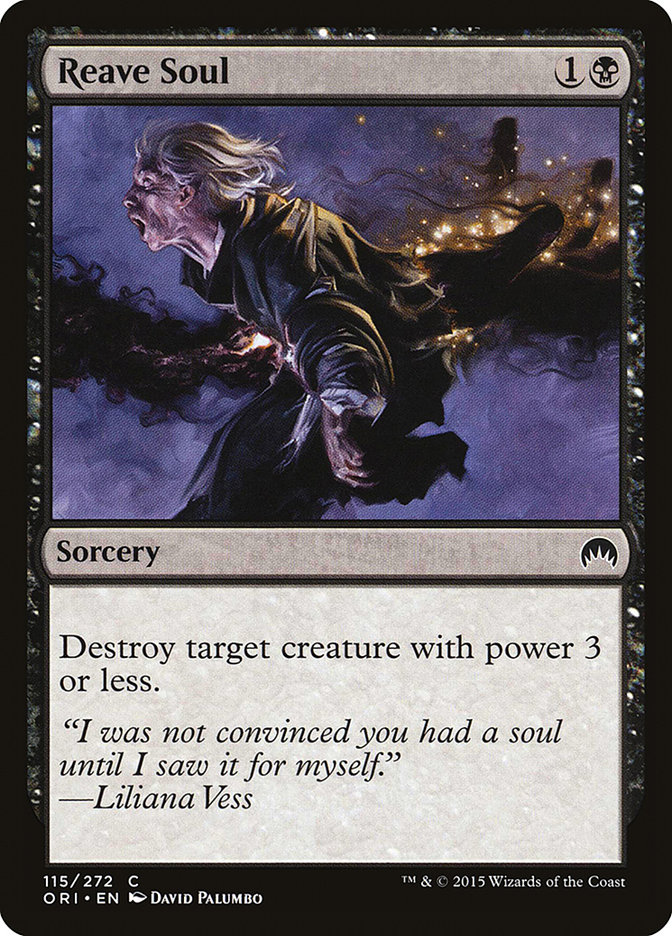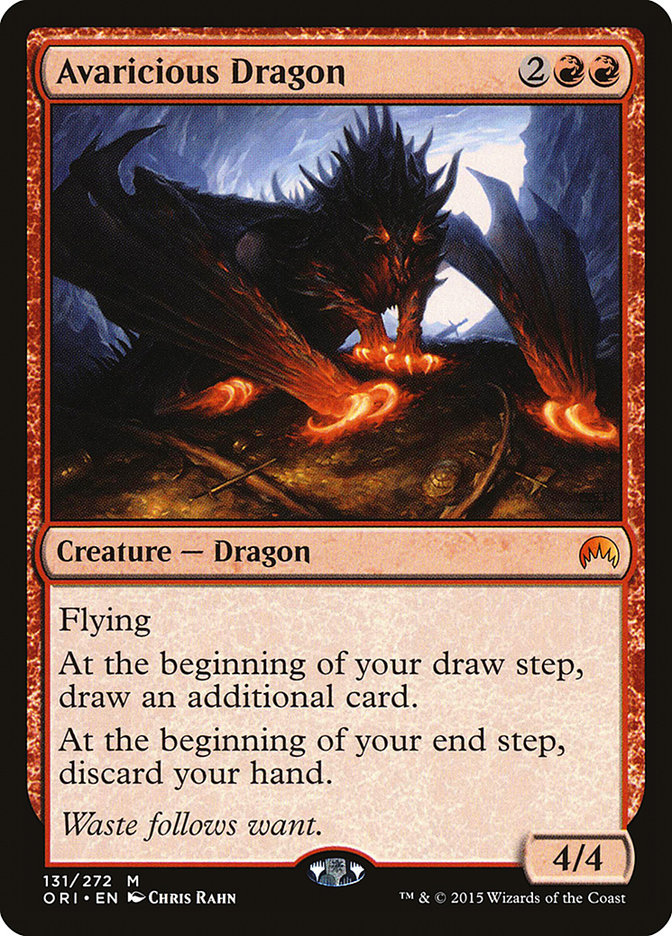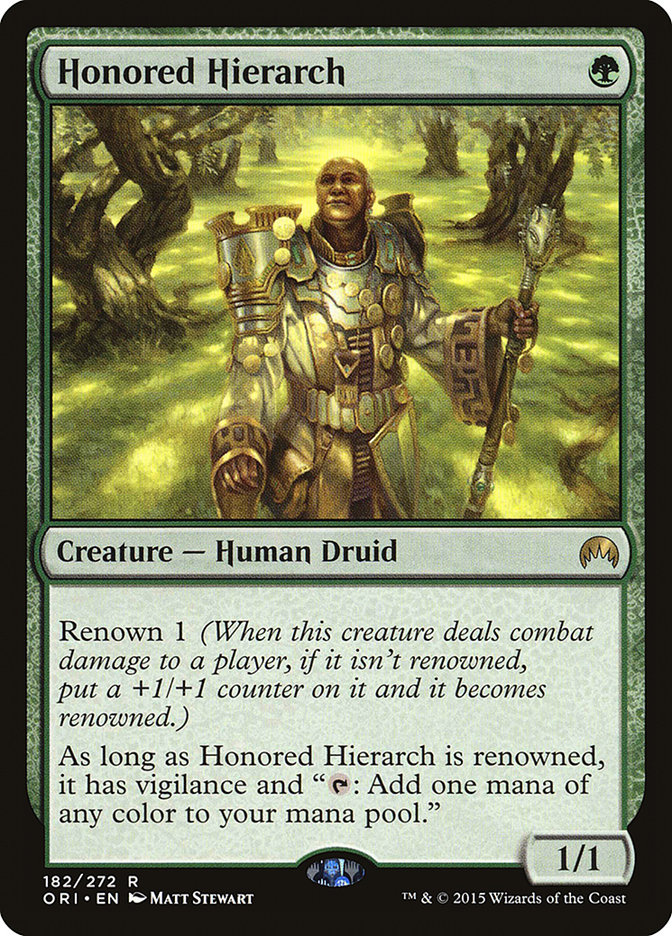It’s about that time again. While we’ve had news trickling in about the contents of Magic Origins for a while now, this week is when the floodgates truly burst open, and all of a sudden we have a rushing river of spoilers all around. As the last of the core sets making way for the new block structure and rotation policy, as well as the set that is telling the stories of five of the game’s iconic planeswalkers, Origins has a lot of expectations to live up to. From what we’ve seen so far, it’s poised to do exactly that.
Today I want to talk about the cards that have stood out the most, both as potential major players in Constructed formats as well as those that are just cool designs on which I feel compelled to comment. If I don’t mention a card and you’re curious to hear my thoughts on it, be sure to let me know so I can touch on it later either in a future article or on Twitter.
The obvious place to start discussion about Magic Origins is the cards for which it is named – the double-faced creature/planeswalkers that represent the moment each of the five former mortals ignited their Planeswalker spark. These are very difficult cards to evaluate. Planeswalkers alone are often difficult to judge without significant play, but these are even more complicated than that. If each of them started in their planeswalker form for their creature casting cost, they’d be absolutely outrageous, but they all have hoops for players to jump through before getting to that point. Let’s take a look at them one by one.
Jace is one of the easiest of the new planeswalkers to transform, since in many game states you only need for him to survive for a single turn and then activate his ability. The trigger conditional of having five or more cards in your graveyard is an easy one to meet, whether with self-mill effects or just by playing fetchlands and casting spells.
On top of that, his creature form is a meaningfully useful one by itself. Merfolk Looter is a card that saw a reasonable amount of play over the years, both in decks looking to fill up their graveyards as well as those that just wanted to improve their card quality. As a 0/2, Jace is actually better at that particular job since he won’t die to one-damage removal effects and can actually block one-power creatures while living on to do his duty. Interestingly, you can actually also block with him and then use his loot ability to transform him into a planeswalker, which can remove him from combat and essentially let you “fog” an attack from a large creature.
As a planeswalker, though, Jace isn’t nearly as impressive as in his previous incarnations. Of course, that’s a good thing, since he can potentially become active in the very early turns of the game. His +1 ability can help protect himself from small or even medium-sized creatures, though it does little against multiple attackers. His ultimate takes four turns to reach and has no immediate game impact, although it does provide inevitability since it will allow you to eventually deck your opponent.
It seems to me that in order for Jace to be good, his strength must lie in his -3 ability. It is certainly a powerful one, allowing you to essentially give an instant or sorcery in your graveyard flashback for the turn. Was Jace training to be a Snapcaster Mage when his spark ignited? Much like Snapcaster Mage, Jace’s -3 ability offers card advantage whenever you use it, plus the strategic value of being able to reuse specific narrowly-powerful effects.
The problem with Jace compared to Snapcaster Mage is that you actually have to enable Jace’s planeswalker side in order to leverage the -3 ability. That means that while Snapcaster Mage is a great inclusion in a nearly creatureless spell-heavy deck, Jace is going to end up being the target for all of your opponent’s otherwise useless removal spells. Since he needs to survive a full turn cycle in order to activate and transform, that can be a real concern.
I do think Jace is powerful, but I’m hard-pressed to think of a deck in which he would find a good home. What seems most likely to me is that Jace ends up being a powerful sideboard option for creature-light control decks in order to keep their opponents honest for fear of losing the game to either the ultimate or the card advantage generated by his -3 ability.
Next up is Kytheon, or Gideon as we’ve known him before now. While Jace clearly needs a very specific sort of deck built around him in order to take advantage of his planeswalker form, Kytheon/Gideon is much more straightforward. As a 2/1 creature for W with multiple abilities, Kytheon makes it clear that we’ve come a long way since the times of Savannah Lion, but he still fits in the same style of aggressive deck.
In a deck with sufficient one-drop creatures, it’s easy to imagine flipping Gideon as early as the third turn. Playing Kytheon on turn one, then two more one-drops or something like Raise the Alarm or Dragon Fodder on turn two, and then simply attacking with all of your creatures on turn three means that you have Gideon, Battle-Forged ready to go ASAP.
Gideon himself is powerful, though not overwhelming once he is in play. His+2 ability isn’t nearly as powerful as his previous incarnations, only forcing a single creature to attack him, and he no longer has the -2 ability to destroy a tapped creature to follow it up. In this case, his +2 seems best suited to combo with something like a bunch of first striking creatures. Given the transform condition, however, and the kind of deck that he’s going to generally be played in, it’s more likely just to get a potential blocker out of the way by forcing it to punch Gideon in the face.
I imagine that the most common play pattern for Gideon will be to simply animate him as a 4/4 and send him in with the rest of your team every turn after you transform him. There will certainly be tactical reasons to use his +2 or +1 abilities depending on your opponent’s board – like if you have a five-power creature that you want to attack with into an opposing Siege Rhino – but the kind of deck that can flip him in the first place is usually looking to be turning its creature sideways as often as possible. This is even moreso the case since Gideon doesn’t even have an ultimate to build toward – the only value for Loyalty counters is to keep him alive against opposing attackers, so you might as well send him on offense while you can.
If there is an aggressive deck built around small white creatures in the new Standard, Gideon is certain to be a part of it, and in fact is likely a major motivation to build it in the first place. But I don’t find it likely that he’ll find his way into other aggressive decks as a splash, since a 2/1 for one mana isn’t exactly the kind of card you’re looking to finally enable when you draw your second or third color.
Liliana was one of the very first cards ever revealed from Magic Origins, showcasing the double-faced creature/planeswalker design back at PAX East. As the story goes, Liliana was a healer who turned to necromancy to try to revive her dead brother and thus started down her dark path. Thus, her creature form turns into a planeswalker when one of your other creatures dies, and that dead creature comes back as a zombie.
While the story the card tells is very cool, this seems like a tough nut to crack from a gameplay perspective. Liliana’s initial body is reasonable, a 2/3 lifelink creature for three mana, but it’s certainly nothing especially exciting by itself. The fact that she can trigger at any time, including on your opponent’s turn, makes it hard to rely on her planeswalker form. If you play Liliana and say go, your opponent can easily use a removal spell to kill one of your other creatures then attack your planeswalker before you have a chance to use her +2 ability to gain loyalty so she can survive.
The best way to use Liliana, I imagine, is to include her in a deck that can play and trigger her ability right away with some kind of sacrifice outlet. The fact that sacrificing a creature with her in play gives you not only a planeswalker but also a 2/2 zombie makes her pair extremely well with the Exploit mechanic. Against a creature deck, you can easily play her alongside a Sidisi’s Faithful on turn four – even with an otherwise-empty board – and then sacrifice the Faithful to itself to bounce an opposing creature, get a 2/2 zombie, and flip Liliana. You can then even use the –X ability to return the Faithful and bounce yet another creature in the same turn! Not bad for two cards and four mana – especially since you can keep returning the Faithful again as long as Liliana has loyalty counters.
Any deck using Liliana is likely to rely on these kind of combinations, and may end up being inconsistent or fragile as a result. Even if you do draw the right cards together, if an opponent kills Liliana in response to your Exploit trigger, you can easily end up with nothing. While she can certainly enable some cool plays, I’m not convinced that Liliana will be a key component of any major competitive deck.
Nissa is an interesting card, and I think one that is better than she looks. I’ve played a Borderland Ranger or two in my day, though generally as a mana fixer and cheap body in a deck that wanted both, like Naya Pod. Nissa, on the other hand, can’t help fix your mana even in a format with shock lands since she can only find a basic Forest. But she can ensure that a big mana deck has the tools it needs while offering a body in the early game and the threat of a planeswalker in the late game – if she survives that long.
One of the decks that experimented with briefly for Pro Tour Dragons of Tarkir was a Naya Dragon Ramp deck featuring cards like Explosive Vegetation to play fast Dragonlord Atarkas and Dragonlord Dromokas. The deck was powerful but inconsistent, like most decks of its type. Ramp decks always suffer from the problem of needing the right combination of three different components – ramp effects, mana sources, and big threats. And against aggressive opponents, they need the tools to defend themselves as well. Putting all of these pieces together in time can be a challenge, which is a big reason that ramp decks are rarely a major component of most metagames without a lot of two-mana lands.
While Nissa doesn’t actually ramp your mana production, she does a lot to help out a ramp-style deck. Searching for a land ensures that you have enough resources to hit your curve as the game goes on, and her 2/2 body gives you a roadblock against small creatures in the early game. Then, when you’ve actually gotten to the stage of the game when you have more than enough mana to do everything that you want, she transforms into a planeswalker that can help generate actual threats.
Nissa, Sage Animist has three powerful abilities. Her +1 is pretty close to “Draw a card,” but marginally better because it lets you put any land you find directly onto the battlefield. Her -2 lets you generate a threat immediately, in the instance that you really need some kind of body to protect either you or her from dying or you’re just looking for some kind of pressure right away. And her -7 pretty much reads “win the game” in most spots, since it generates 36 power worth of creatures that essentially have haste.
Of the new planeswalkers in Origins, Nissa is the one that has gotten the least buzz, at least as far as I’m aware, but she is the one that excites me the most. That probably comes as no surprise if only because she’s the green representative, but I think she is the one that most clearly has a home in a particular kind of strategy that truly needs the support. I’m looking forward to building decks to take advantage of her – probably alongside a bunch of giant Dragons.
Chandra is certainly a powerful card that offers aggressive red decks a difficult-to-remove, repeatable damage source. The problem, though, is that aggressive red decks are generally successful because of their efficiency; a 2/2 for three that pings for one hardly fits into that framework.
The dream, of course, is playing her on turn three, then attacking for two, casting a spell, and then pinging for one to flip her on turn four and immediately +1 her as well for two more damage. But not only does that require a 2/2 creature survive through the turn unscathed, but that it can also connect with your opponent’s face. You can, of course, use a burn spell to kill a blocker to get her through, which will let her ping and untap to attack, but your opponent will clearly be aware of that possibility and can either hold back multiple blockers or use a removal spell on her to prevent it from happening.
I’m no expert in red beatdown decks, but in my experience playing against them, what I’m most afraid of is always the really explosive draws with a lot of cheap threats and burn. Things like Goblin Guide, Monastery Swiftspear or Foundry Street Denizen into Dragon Fodder into Hordeling Outburst – those are what make aggressive red decks so threatening. They aren’t about fanciness – they’re about forcing your opponent to have a way to stop them in time or dying a quick and painful death. I can imagine Chandra finding a home in the sideboard of such decks against opponents who are light on early blockers or removal, perhaps, but given that she costs three and dies to not only the maindeck removal spells that people regularly play but also the cards like Drown in Sorrow that people tend to sideboard in against red decks, she certainly doesn’t strike me as a card that’s likely to have a big impact on Standard upon her release.
Okay, so I guess I had a lot more to say about the five planeswalkers than I initially thought. Let’s go through some quick hits on some other cards that caught my eye:
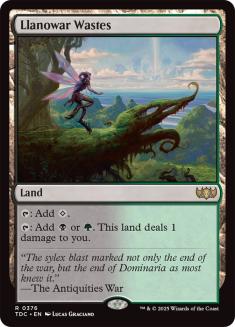
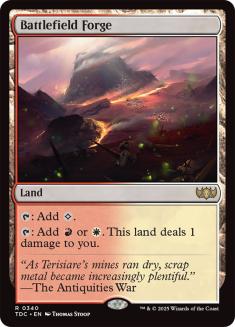
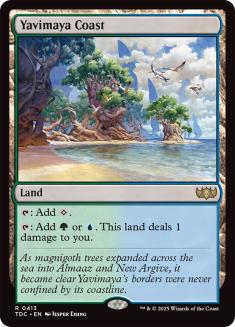
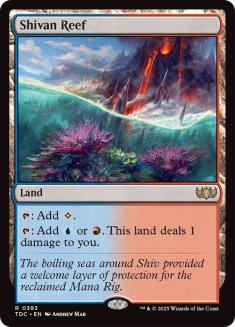
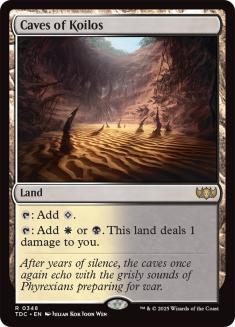
It’s not a big surprise that the enemy painlands are back to continue to balance out the allied fetchlands from Khans block. This means there is no actual change in the tools available to Standard decks on the release of Origins, but I am curious to see what kind of mana fixing we get in the return to Zendikar once the Temples are gone – they’ve been a major factor in the texture of the format since their release.
Not really costed such that they work very well with Kytheon himself, who really wants cheap creatures, but this is a powerful card to top the curve of an aggressive white deck. Their body isn’t all that impressive as a 4/3 that becomes a 5/4, but a reusable WW ability to tap opposing creatures offers the finishing power to punch through blockers that white creature decks often need. I’d expect these to see play if Kytheon does.
This is no Stoneforge Mystic, since it has to actually connect before you get any advantage out of it, but a potential 3/3 for two that also offers card advantage is definitely a card to keep an eye on – and also a reason to look at any new equipment that much more closely.
Power Sink is back in less confusing form. Clash of Wills offers control decks a reason to potentially play slightly fewer lands that enter the battlefield tapped, since each mana you can pump into its cost really matters.
Not the kind of card I typically play, but this certainly seems really exciting alongside Quicken as an instant-speed Timetwister.
Very strong against token strategies, though probably too expensive to do much else outside of a big-mana deck. Could this be a reason to play blue ramp?
Ophidian plus! I still have a soft spot for that snake, since it won me my first Grand Prix title back in 1997. I tried to build Scroll Thief decks back when it was in Standard, but that was the same time as Jace the Mind Sculptor. This seems like the sort of card that could really enable a U/R aggressive deck.
I really like having both this and Crux of Fate in the same Standard format, much like I really liked the Tragic Slip/Victim of Night dynamic back in Innistrad. Having removal spells that are either more or less efficient or effective against different kinds of creatures makes games much more interesting than the easy-answer Hero’s Downfall world we’ve been living in, and I’m looking forward to the day when that card is gone.
Another interesting removal spell that adds texture to gameplay and card choices, though it’s strange that it comes so soon after Defeat, especially when the worse card got the better name.
A cool card that makes a nice curve topper for ultra-aggressive red decks. Unlikely to find a home in most other Dragon decks, since the rest of them are so expensive.
I’m sure I’ll write about this one more in the future. Bird of Paradise it is not, which is what I was hoping to see when Leaf Gilder was revealed since that meant we were unlikely to see Elvish Mystic back. At best, it ramps from two to four mana if you play it on turn one then attack turn two, which makes it a far less reliable Sylvan Caryatid. I’m going to reserve judgement for now, but my inclination is that it won’t serve the purposes I want from my mana creatures.
That’s it for now. I’m already excited for Magic Origins and it still won’t be out for weeks! What are your favorite cards you’ve seen so far?


